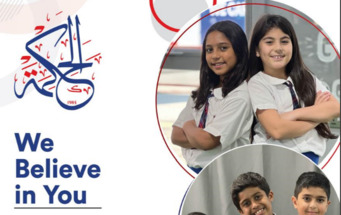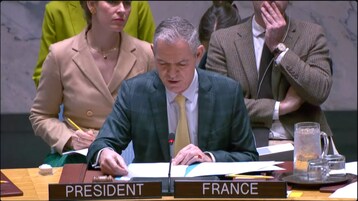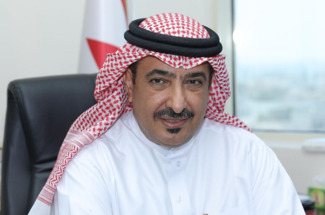-
After withdrawal, Trump shifts focus to Syria’s oil fields

WASHINGTON (AP) — As Russian and Turkish leaders divvy up security roles in northeast Syria following an abrupt U.S. troop withdrawal, President Donald Trump is focused on oil fields elsewhere in the war-torn country.
Trump spurred a fresh wave of criticism Thursday with a tweet noting that he had spoken with Syrian Kurdish military chief Mazloum Abdi and observing that perhaps “it is time for Kurds to start heading to the Oil Region,” an apparent reference to oil fields in Deir el-Zour province of Syria. That’s an area that U.S. military commanders see as critical to holding off an Islamic State resurgence in the region.
But even as Trump heralded his move to pull nearly all U.S. troops out of what he derided as the “blood-stained sands” of Syria, he’s repeatedly referred to the country’s oil fields as prized land that he’s intent on protecting.
“We’ve secured the oil, and, therefore, a small number of U.S. troops will remain in the area where they have the oil,” Trump said Wednesday while discussing the pullout of all but 200 to 300 U.S. troops in Syria. “And we’re going to be protecting it, and we’ll be deciding what we’re going to do with it in the future.”
White House officials did not respond to requests for greater clarity about Trump’s tweet suggesting Kurds head to the oil region.
The Pentagon released a statement Thursday saying it is committed to sending additional military forces to eastern Syria to “reinforce” control of the oil fields and prevent them from “falling back to into the hands of ISIS or other destabilizing actors.”
No details were provided on how many or what kind of forces would be sent, or whether decisions on those details have been made.
Trump’s decision to withdraw the bulk of roughly 1,000 American troops from Syria drew bipartisan condemnation. The decision came after Turkish President Recep Tayyip Erdogan told Trump earlier this month that he intended to carry out an operation to clear the Turkey-Syria border of Kurdish fighters who fought side-by-side with U.S. troops in beating back IS fighters in northeast Syria.
The Republican president’s comments this week raised fresh concerns that he has an incomplete understanding, or is indifferent to, the fragile dynamics of the region, his critics say.
“The President of the United States of America appears to be calling for a mass migration of Kurds to the desert where they can resettle atop a tiny oil field,” Brett McGurk, Trump’s former special envoy to the global coalition to defeat IS, wrote on Twitter.
But the idea of keeping troops in eastern Syria to guard the oil fields resonated with Trump and presented military commanders with a way to keep at least a residual force inside the country. Besides a presence near the oil fields in eastern Syria, some U.S. forces will remain in southern Syria.
Defense Secretary Mark Esper said that the main goal of the American troop presence is to make sure the Islamic State is contained and unable to gain control of the oil fields and the revenue they generate. The administration also sees some benefit to Kurds being in control of the oil, according to a senior administration official, who briefed reporters on the administration’s deliberations on the Syria withdrawal.
“The Oil Fields discussed in my speech on Turkey/Kurds yesterday were held by ISIS until the United States took them over with the help of the Kurds,” Trump said in another tweet Thursday. “We will NEVER let a reconstituted ISIS have those fields!”
Eastern Syria is the center for what remains of Syria’s oil industry, which although in shambles, remains one of the main sources of revenues for the Kurdish-led administration there.
The Kurdish forces seized control of small oil fields in northeastern Hassakeh province after the government pulled out of most of the Kurdish-majority regions in 2012 to fight rebels elsewhere.
After expelling Islamic State militants from southeastern Syria in 2018, the Kurds seized control of the more profitable oil fields in Deir el-Zour province.
A quiet arrangement has existed between the Kurds and the Syrian government, whereby Damascus buys the surplus through middlemen in a profitable smuggling operation that has continued despite political differences. The Kurdish-led administration sells crude oil to private refiners, who use primitive homemade refineries to process fuel and diesel and sell it back to the administration.
The oil was expected to be a bargaining chip for the Kurds to negotiate a deal with the Syrian government, which unsuccessfully tried to reach the oil fields to retake them from IS. With Trump saying he plans to keep forces to secure the oil, it seems the oil will continue to be used for leverage— with Moscow and Damascus.
Before the war, Syria produced around 350,000 barrels per day, exporting more than half of it. Most of that oil came from eastern Syria. Foreign companies, including Total, Shell, and Conoco, all left Syria after the war began more than eight years ago.
Sen. Lindsey Graham, R-S.C., said after meeting with Trump on Thursday that he urged him to stay engaged in Syria.
“If you can find a way to secure the oil fields from Iran and ISIS, that’s in our national security interest,” Graham said.
source:AP
Tags
You May Also Like
Popular Posts
Caricature
BENEFIT Sponsors BuildHer...
- April 23, 2025
BENEFIT, the Kingdom’s innovator and leading company in Fintech and electronic financial transactions service, has sponsored the BuildHer CityHack 2025 Hackathon, a two-day event spearheaded by the College of Engineering and Technology at the Royal University for Women (RUW).
Aimed at secondary school students, the event brought together a distinguished group of academic professionals and technology experts to mentor and inspire young participants.
More than 100 high school students from across the Kingdom of Bahrain took part in the hackathon, which featured an intensive programme of training workshops and hands-on sessions. These activities were tailored to enhance participants’ critical thinking, collaborative problem-solving, and team-building capabilities, while also encouraging the development of practical and sustainable solutions to contemporary challenges using modern technological tools.
BENEFIT’s Chief Executive Mr. Abdulwahed AlJanahi, commented: “Our support for this educational hackathon reflects our long-term strategic vision to nurture the talents of emerging national youth and empower the next generation of accomplished female leaders in technology. By fostering creativity and innovation, we aim to contribute meaningfully to Bahrain’s comprehensive development goals and align with the aspirations outlined in the Kingdom’s Vision 2030—an ambition in which BENEFIT plays a central role.”
Professor Riyadh Yousif Hamzah, President of the Royal University for Women, commented: “This initiative reflects our commitment to advancing women in STEM fields. We're cultivating a generation of creative, solution-driven female leaders who will drive national development. Our partnership with BENEFIT exemplifies the powerful synergy between academia and private sector in supporting educational innovation.”
Hanan Abdulla Hasan, Senior Manager, PR & Communication at BENEFIT, said: “We are honoured to collaborate with RUW in supporting this remarkable technology-focused event. It highlights our commitment to social responsibility, and our ongoing efforts to enhance the digital and innovation capabilities of young Bahraini women and foster their ability to harness technological tools in the service of a smarter, more sustainable future.”
For his part, Dr. Humam ElAgha, Acting Dean of the College of Engineering and Technology at the University, said: “BuildHer CityHack 2025 embodies our hands-on approach to education. By tackling real-world problems through creative thinking and sustainable solutions, we're preparing women to thrive in the knowledge economy – a cornerstone of the University's vision.”
opinion
Report
ads
Newsletter
Subscribe to our mailing list to get the new updates!






















